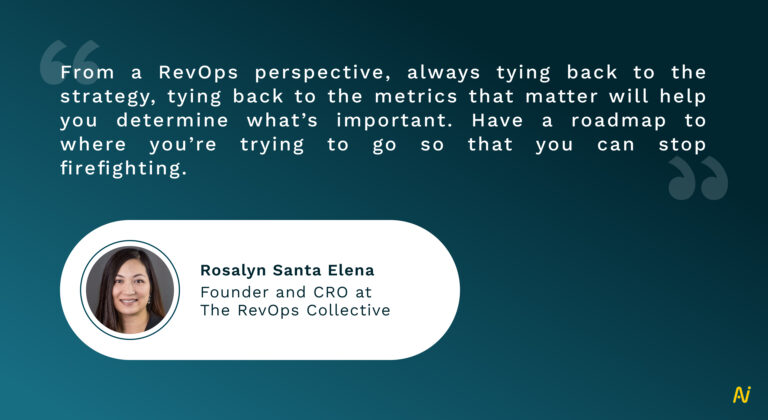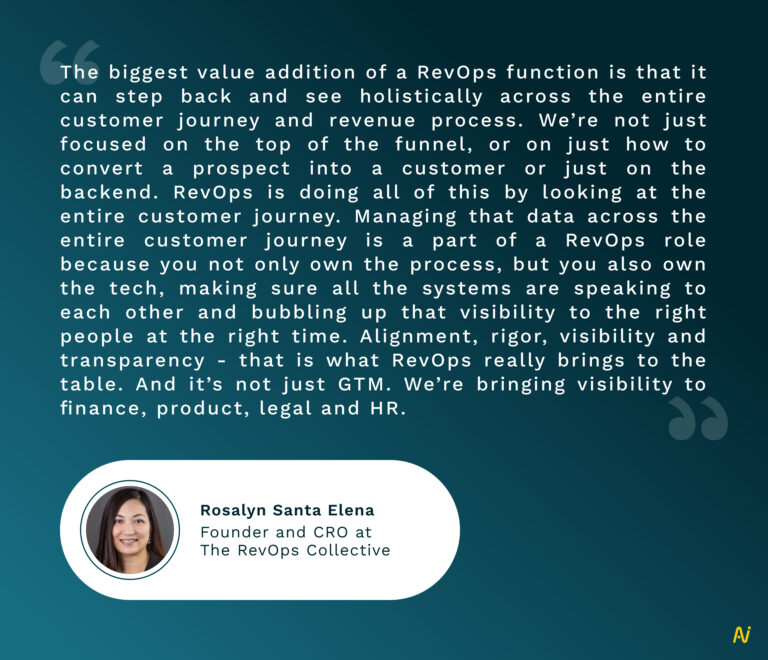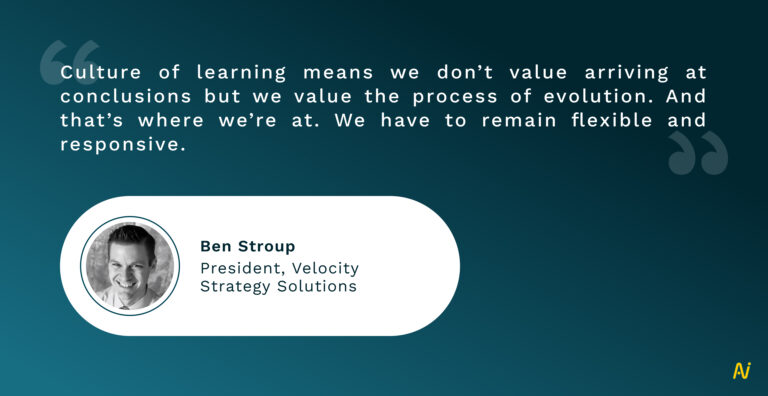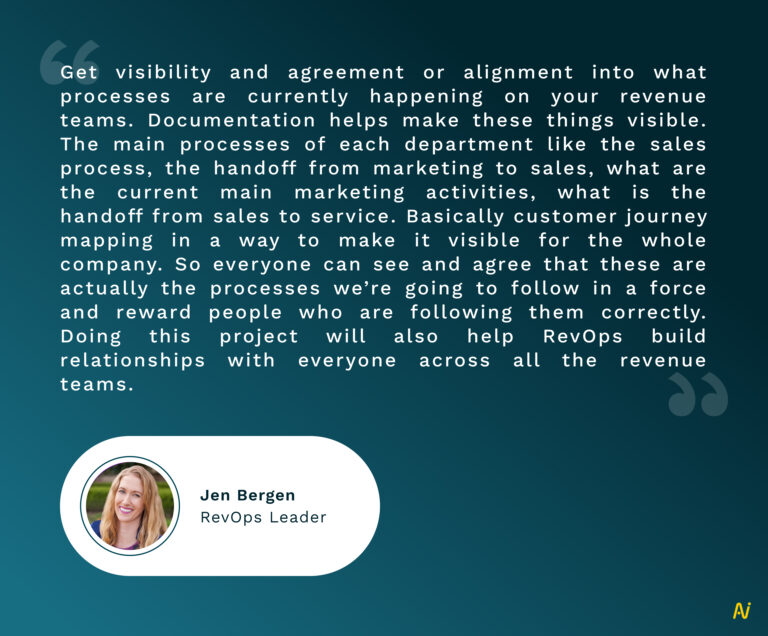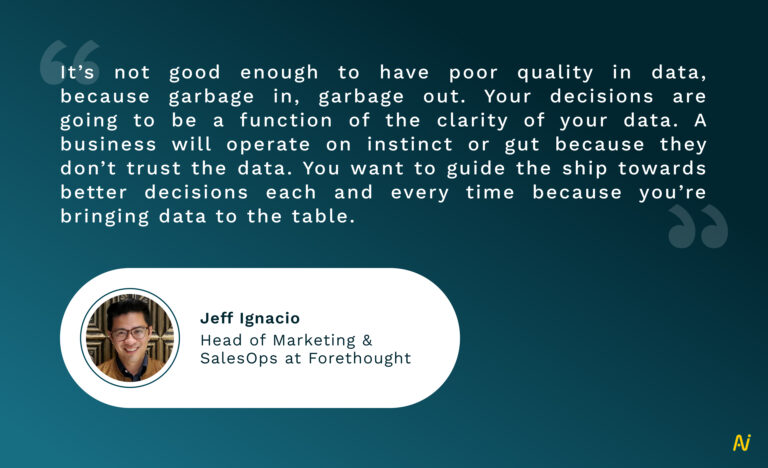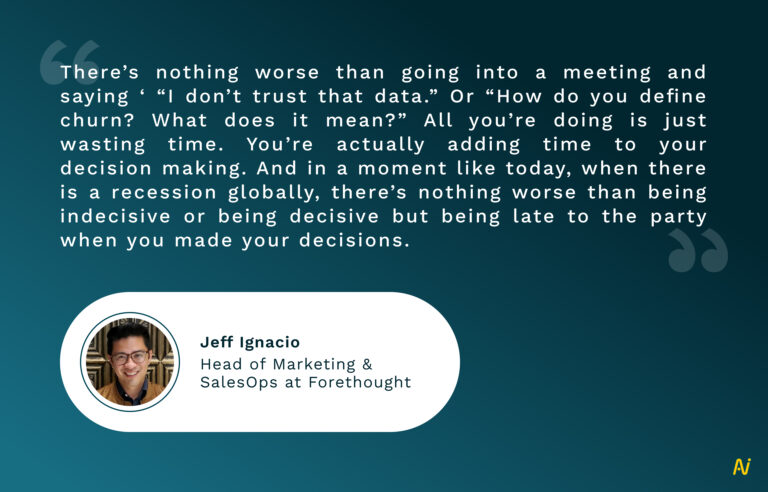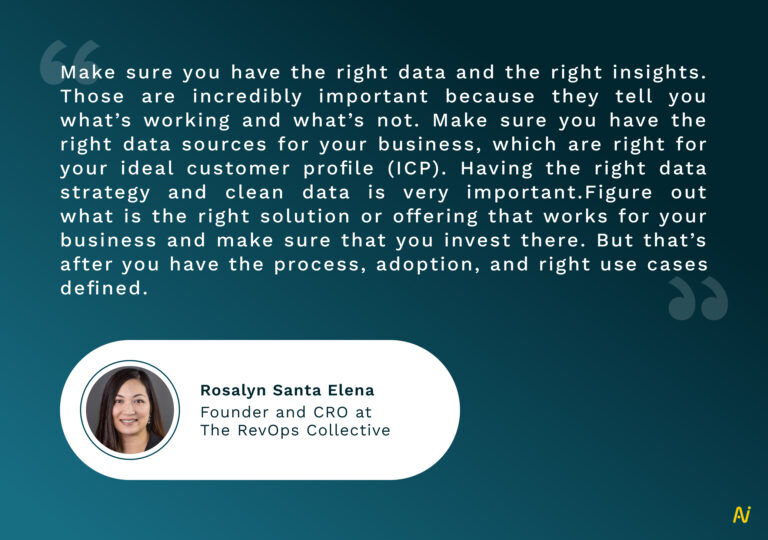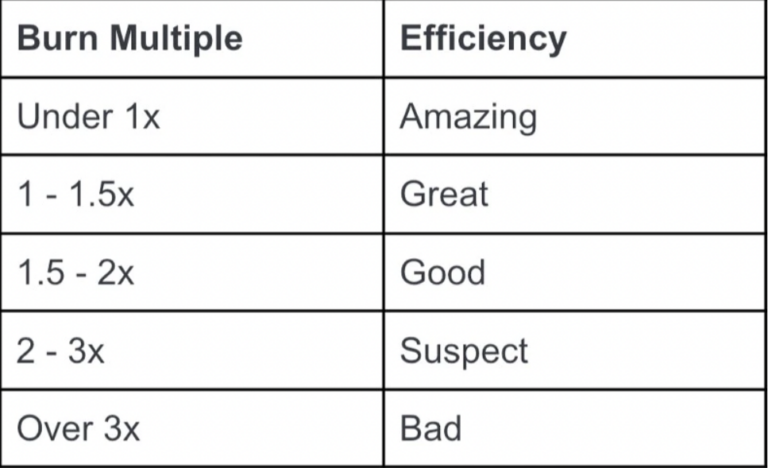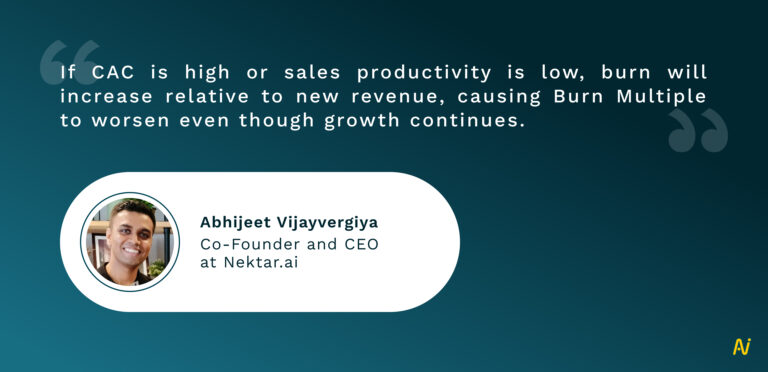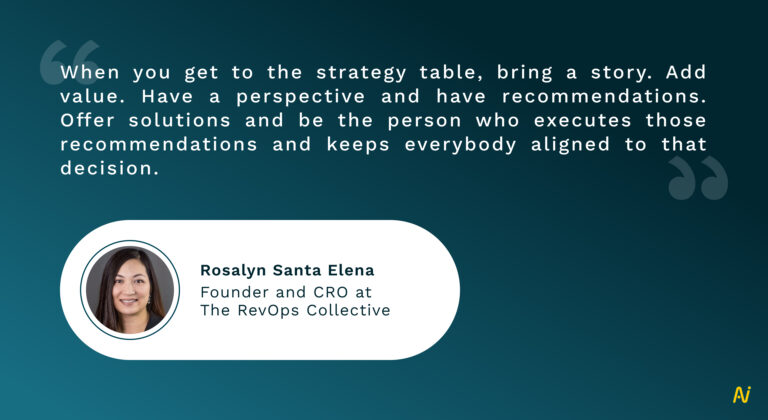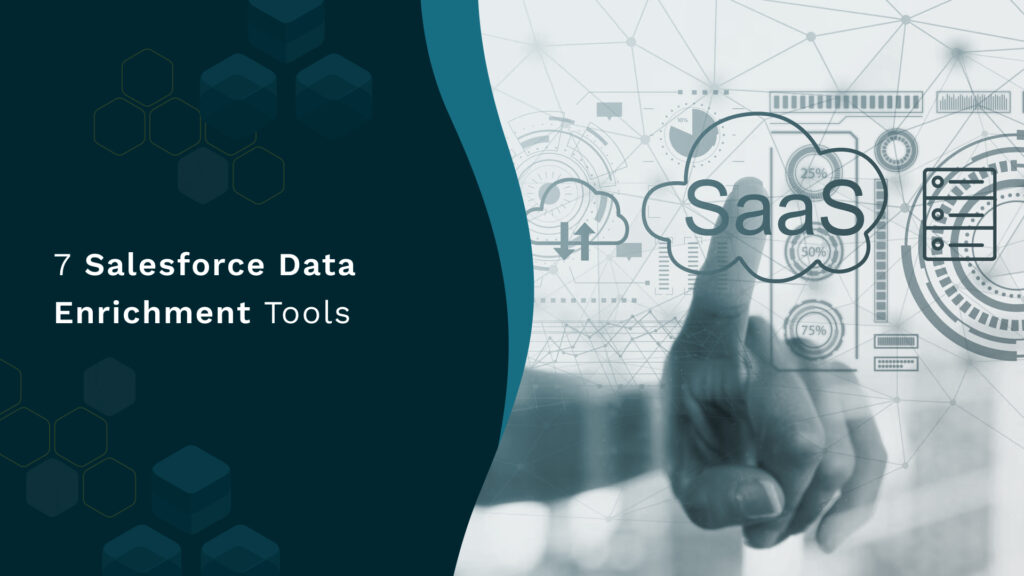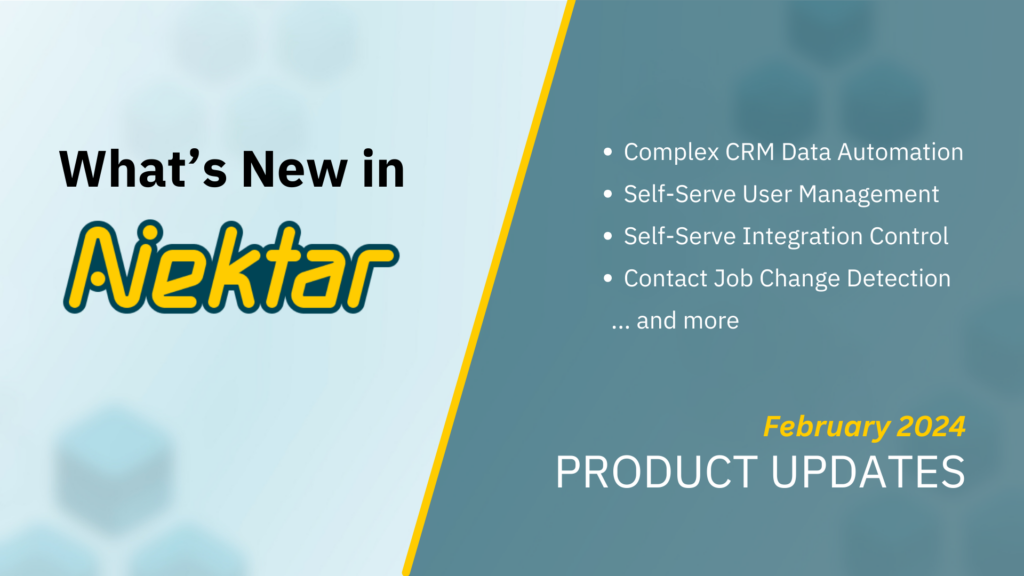2024 is here! Well, almost. And revenue operations as a function is gaining popularity for all the right reasons. So if you have joined the revolution, we have collated some RevOps best practices for you to follow through 2024.
We asked revenue operations experts to share their advice on what lessons revenue leaders should be keeping in mind while running strategies for the coming year.
Let’s dive in.

1. Change your performance scorecard to leading indicators
Think about the key objectives that you want to drive in 2024. Be it faster revenue, shorter deal cycles or bigger deals – lay down the outcomes you want to achieve that will help you retain your customers.
Next, think about the actions that will lead to those outcomes. And map out the metrics that will help you assess how you are performing against those outcomes.
The scorecard for most organizations is lagging indicators where you do a post-mortem or retrospective on the past. That will not help you build a sustainable revenue engine that stands the test of time. Revenue teams need to stop reacting to situations. And adapt to market conditions and use leading indicators to define growth.
By using leading indicators in performance scorecard, you can:
- Have a clear view of what activities lead to success
- Review activity data and align behavior to strategy
- Get an early insight into risks
2. Break away from silos
Revenue growth in 2024 will not be linear or compartmentalized. It’s going to be very interdependent and interconnected, and more of a spectrum.
Buyers demand a seamless and streamlined experience with your brand. But traditional silos across the sales process keeps tools disconnected and data and insights trapped in silos.
This leads to a lot of opportunity loss when it comes to creating a seamless buyer journey. In 2024, revenue leaders will have to think strategically about the end to end “lead to cash to renewal and expansion” process. Have RevOps systems and processes in place that break down barriers between revenue teams and provide visibility along every stage of the buyer journey.
Having a single technology spine that allows for a consistent flow of data, leads and accounts throughout the buyer journey will help build greater trust, value and customer loyalty.
3. Create a culture of continuous learning
Recognize that disruption is the new business reality. And to survive in this new world, you need to find ways to be more flexible, faster and responsive. This is only possible if there is a continuous feedback loop where leaders bring multiple stakeholders to the table and listen.
Creating a listening platform will help leaders be more responsive and constantly fine-tune processes. Ensure your team, data and processes are all precisely aligned and in sync with one another. If there is one thing that can help companies, it’s really being a champion of learning.
RevOps in this sense becomes the risk insurance policy because it allows you to start and stop things faster. It allows you to adapt faster not simply based on history, context, confirmation bias or any other things that we would personally bring to it. But it addresses challenges at our core, that the idea that we can unilaterally know what the next right thing to do is.
4. Rediscover the value of corporate documentation
Driving operational efficiency in 2024 will mean reducing the time it takes to train and ramp up employees on various teams about processes and technologies. This is possible through the process of documentation.
Documentation is the process where you record who, what, where, when, why and how to do everything in your company and your role. It is the foundation to building repeatable processes.
Revenue leaders must educate employees on the importance of documentation in 2024 and how it is a part of everyone’s job and set up systems where you keep iterating and improving the documentation of your processes with time.
- Documentation helps get visibility and alignment to what processes are currently happening in your revenue teams.
- It pushes for transparent and async communication to help your company move faster.
- Documentation helps lock in institutional knowledge and helps look at a single problem with clarity, consistency and agreement throughout various stakeholders in an organization.
Whether you are moving through iterative steps to arrive at some new conclusions or working through an initial hypothesis, documentation gives a structured and disciplined approach to that project.
Documentation helps arrive at a repeatable formula on creating efficient processes and also update it as the organization moves forward.
5. Consolidate & optimize your tech stack
2024 is going to be the year of tech stack consolidation. Revenue leaders will be forced to only focus on technology that has a clear cut path to revenue.
To be able to achieve that, experts advise revenue leaders to take a look at their tech stack, map it out and build a roadmap that aligns with the customer journey.
It’s important to buy what’s necessary rather than buying what everybody else is buying. Because that big brand you’ve been hearing about may not be right for your use case or your business.

For every piece of technology that you have, ask what is the use case. Clearly state the business challenge that you’re trying to solve with that technology. And measure ROI through adoption because there is no point even having the right tools, while no one in your sales team uses them.
Figure out what you really need because only the right set of tools can help you drive your team’s productivity or help with achieving operational efficiency.
Align your tech stack to your customer journey.
Ask questions like – How does your buyer or prospect like to be engaged? At the top of the funnel, if you think about who your prospects are. Who is your ICP?
That’s where the data, analytics come in. And you want to buy the right technology there as well.
- Align your tech stack to a very specific set of use cases that solve your customer’s problems
- Always be looking at measuring that ROI because you need value through technology
- Keep adoption high in your radar because it’s directly linked to ROI and extracting value out of the technology you are investing in.
- Enable your teams through training to make sure they are actually using the tools and it’s adding value to their day to day life.
- Continue to educate your team so that they are able to unlock the value from the technology.
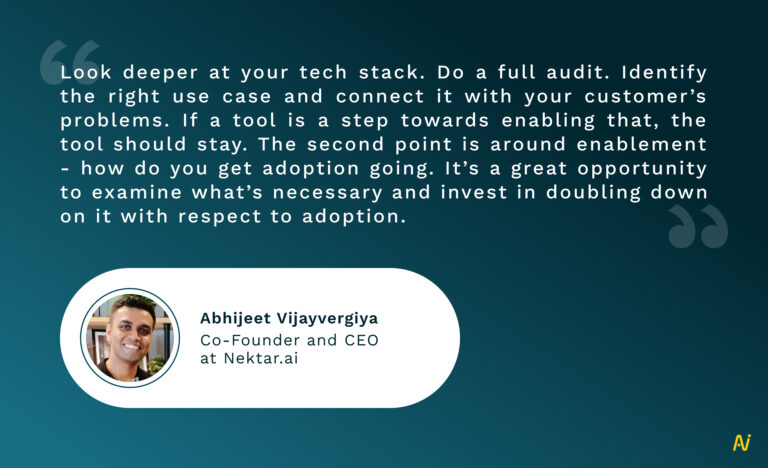
6. Build an ironclad strategy for data quality
To be truly data-driven in 2024, you need to have a strong strategy around data quality and data governance.
Data quality is ensuring the data that you have is trustworthy, reliable and accurate. And this data is used to drive business decisions at every stage of the buyer journey. A great example here is that of the data in your CRM system.
For great results, you need to be careful of what you feed your CRM system. Or else, it becomes a classic case of “garbage in, garbage out.” You cannot expect great results from CRM insights if the source of the data in it is unreliable.
Data lies at the heart of gaining visibility on where to make improvements, drive focus on leading indicators and fix the revenue funnel before it breaks. If the data in the CRM in itself is plagued, you cannot expect insights from it that drive revenue.
In fact, it is quite the opposite. In a recent survey, 44% of respondents estimated their company loses over 10% of annual revenue due to poor data quality.
Such data inefficiencies are causing revenues to leak through your funnel in myriad ways such as high employee turnover, poor sales forecasting, poor ROI from tech stack or poor personalization.
7. Orchestrate your siloed data to unite cross-functional teams
Cross-functional collaboration will be key in surviving an ever-evolving market. But to make this collaboration possible, data has to be the common thread.
However, data is usually trapped in silos across departments like sales, marketing or customer success.
There can be multiple versions of the same data. Even the definitions and understanding of the same data can vastly differ from department to department. Such confusion and broken understanding of data will never make a seamless buyer journey possible.
To elevate the buyer journey into one that drives revenue in 2024, all revenue generating departments have to be brought on the same page when it comes to understanding data and the insights it delivers.
When cross-functional teams come together to solve common problems, having a similar understanding of data helps ensure the system of record is the same for everyone. And everyone is talking in the same language.
This can happen by ironing out the purpose and outcome that the business wants, and get leadership buy-in to set such data understanding strongly in place to be able to foster successful cross-functional collaboration.
Revenue operations can become a game changer and drive growth only when insights generated from multiple touch points across the revenue supply chain are fed back to the system. And robust collaboration across revenue teams lies at the helm of this goal.
Having a data orchestration strategy enables better cross-functional understanding of what data means and what the insights imply. It helps create a common data dictionary which enables to create a common language and common goals around data for all revenue teams, and raises the bar on data quality.
8. Place your bets on data and analytics
A critical component of modern revenue operations roles is turning raw data into actionable insights that create the capacity to win and renew more customers.
There are a lot of data touchpoints that get generated across the revenue supply chain such as handoffs from marketing to sales, handoff from sales to customer success, onboarding, implementation and several other such processes. Converting these data points across the revenue supply chain into insights can help understand nuances of the business and improve it on a regular basis.
For example, these insights can answer questions like:
- What is our Customer Acquisition Cost (CAC)?
- Are we hiring the sales people in the right territories?
- Where are my sales reps stuck?
- What is my sales cycle length?
Having access to these insights can help revenue teams understand the business better and make better strategic decisions. It also eliminates the need to rely on hunches or “gut feelings” to arrive at conclusions.
Investing in the right revenue technology that is powered by artificial intelligence(AI), machine learning(ML) and deep learning will help drive better data-backed decisions in real-time. And serve the new age buyer at every stage of the buyer journey from lead to renewal.
Investing in AI and automation will also help create good data capture systems, eliminate manual dependencies on revenue teams (like CRM data entry) and make them more productive.
9. Pay attention to your burn multiple
2024 is the year to look at the most important capital efficiency metric – Burn multiple. This is the per dollar revenue you’re generating per dollar burned.
Keeping your burn multiple lower will be extremely critical this year. This would involve looking at the business holistically and eliminating anything that does not forecast an ROI. David Sacks presents the following matrix to follow to keep burn multiple under control in a downturn:
This can be tools, processes or systems that have not been adding value to your business. Now is a great time to take a step back and look at how revenue can be made more predictable, accurate and strong.
Make capital not only last, but also have sufficient runway to be prepared for uncertainty.
10. Capture, utilize and democratize data
Data is omnipresent. Organizations are generating it every second.
But so much of it does not get captured. Which leads to a huge opportunity loss in terms of what can be done with that missing data.
Ben Stroup, President at Velocity Strategy Solutions recommends three main ways to leverage the power of data in 2023:
a. Capture the data
You need good capture systems to trap key revenue data that might be missing from core systems like CRM . Part of the capture system is simplifying your tech stack. Find technologies that align all your departments, rather than fitting workflows of specific departments.
For example, marketing might have certain technology they use and that might be different from sales and those two systems may not talk back and forth. This kind of technology disconnect does not help the conversation of talking about the same data in the same way about the same things.
b. Give non-quantitative analysts in your teams access to the data
Data should not just be in the hands of a select few. It should be made available to not just Business Intelligence (BI) teams, but also to non-quantitative analysts. This will help transform the BI team from being the report writers to the report curators. And will also put people from various departments on the same page when it comes to understanding and utilizing the same set of data, thereby breaking traditional silos.
c. Elevate the skill set of non-quantitative analysis to make sense of the data
When perspective meets experience, magic happens. Everyone in the organization should be able to look at your data insights, understand the patterns it’s showing and be able to predict what is coming next. For this, everyone in the organization needs to be trained in analyzing data real-time so that they can have conversations with one another and be ready for any kind of micro disruption that might lie ahead of them.
It’s Time for Revenue Operations to Take that Seat at the Strategy Table
2024 is the perfect time for revenue operations teams to demonstrate value. Think like a business owner, look at your data and come up with recommendations. Don’t run a report, email it over or send a spreadsheet. Take your time to really understand the business, and the stories that data is telling you. And use those insights to fix broken processes.
Revenue operations teams that will focus on building a strong foundation to make their revenue strong and predictable will thrive in 2024 (and beyond). This can happen by walking backwards from the main revenue goals – and then tying it up with processes, tech, data and people.
Revenue operations is the secret weapon to revenue in 2024. Follow these RevOps best practices and make way to not just survive, but thrive in 2024 (and beyond).
Found this blog helpful? If you said yes, you might also find value in our podcast The Revenue Lounge, created exclusively for the RevOps tribe.

